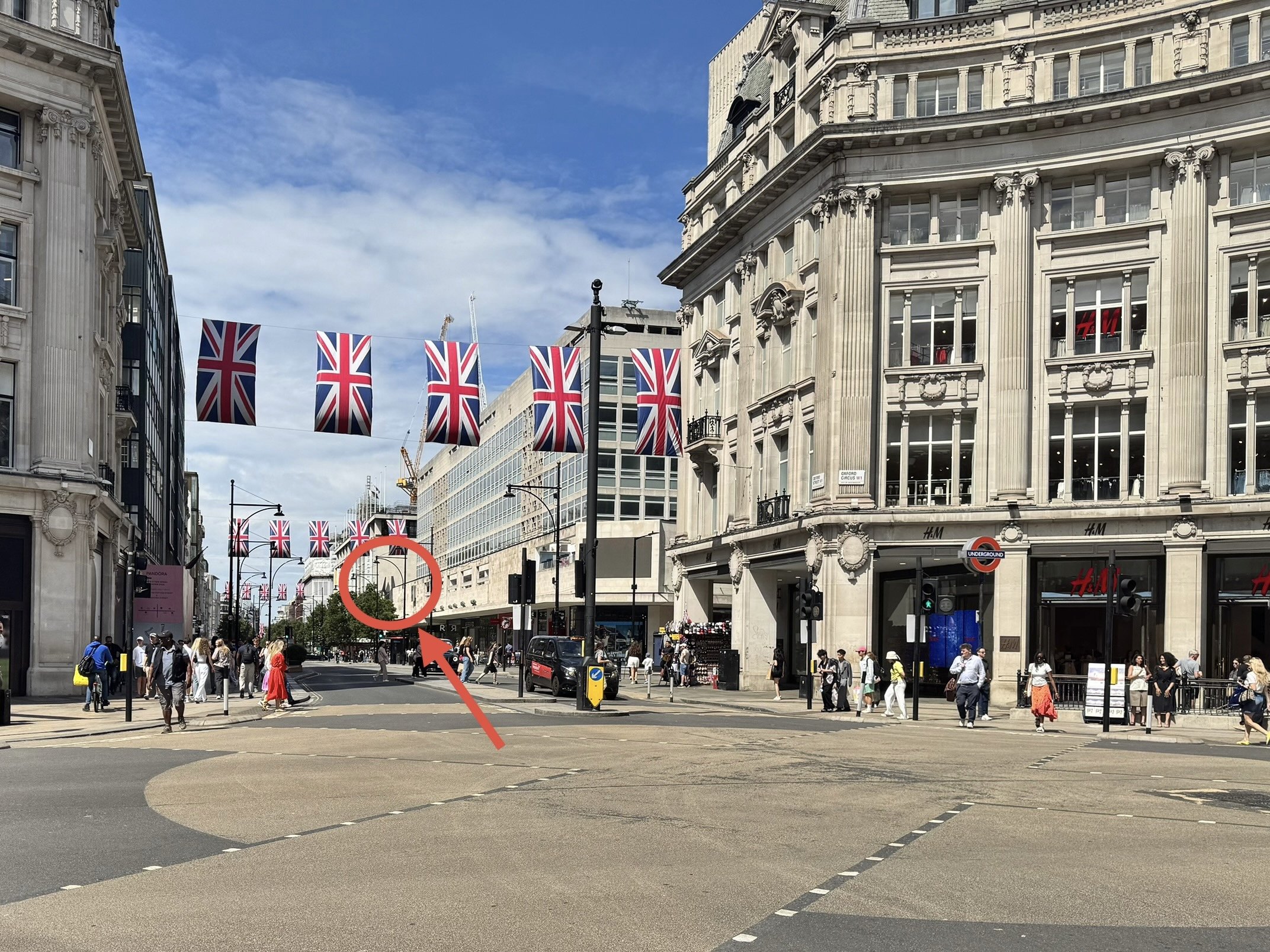Winged Figure (1961-62)
Barbara Hepworth (1903-1975)
Winged Figure (1961-2)
Aluminium with stainless steel rods
19 feet 3 inches in height (5.8 metres)
John Lewis flagship, corner of Oxford Street & Holles Street, W1
The next time you’re out and about with a fellow Londoner ask them if they know what’s on the side of the John Lewis flagship store on Oxford Street. I’ll wager their answer won’t be Winged Figure by Barbara Hepworth, even though Wikipedia claims it’s seen by ~200 million people each year. Busy shoppers rarely stop to take a proper paused look at public sculptures, and who can blame them when Hepworth’s is hung so high above the eye-line and there are Big Macs distracting you from across the intersection.
I’ve always been a bit mixed about the elevated wall mount of Winged Figure, because it eliminates the opportunity of being able to stand right next to it. Winged Figure is 5.8 m (19 ft) tall. It would be an imposing and neck craning experience to gaze upwards at a work that towers more than triple your height. Unfortunately you’ll have to settle for the archival photos on the Hepworth estate website that show the artist and her team next to the work at various stages of construction. The benefits of high placement, however, are obvious.
Most street level statues are quickly obscured by crowds in heavily trafficked areas, but Winged Figure can be clearly seen from every corner of the intersection where it appears. Although a fully unobstructed side view of the work is now frustratingly scuppered by a lush tree that was planted shortly after the millennium. That’s ok, because this is a work best seen from afar. In fact, if you know what you’re looking for you can spot the wingtips all the way from the top of Poland Street, half a kilometre away!
The John Lewis flagship is a post-war construction, designed by architects Slater & Uren and officially opened to the public in 1960 or 1961 (I’ve found conflicting records online.) The East-facing Portland stone wall was initially blank, but a competition run shortly after the building opened eventually led to Hepworth being commissioned.
The brief was to express "the idea of common ownership and common interests in a partnership of thousands of workers", which might be why Hepworth’s Winged Figure was ultimately selected after her original submission was rejected. It’s a blend of sinuous shapes and rigid geometry. It is chaos contained. With supple curved panels pulled inward towards each other by taut lines, the work evokes the same visual and emotional tension one might get from a corset. Hepworth created an entire body of stringed abstracts in the 60s and with the benefit of hindsight it’s hard not to view those works as the perfect embodiment of the post-war explosion in both scientific advancements and social liberalism.
I suspect that interpretation will be lost on the social media generation that descends into town for weekend shopping, assuming they even notice the work at all. Those who do manage to look, and look from up close, will also be frustrated should this work ever appear on a pub quiz. The signage on the wall lists the year as 1963. That’s when it was hung, specifically on Sunday 21st April. I doubt many people saw it being hoisted into place, since Sunday trading in the UK was illegal until 1994. Hepworth actually began working on the artwork in 1961 and she finished it in 1962, so those are the years officially listed for the work.
I like the fact that such an abstract sculpture has not only been given such a prominent public position, but it’s also been given a Grade II* listing. The official Historic England entry is filled with fascinating facts about the work and how it came to be, but that’s just icing on the cake. Like all art, Winged Figure is best appreciated through your own eyes, which is why I’m hoping that the eventual pedestrianisation of Oxford Street will include a set of slightly reclined benches perfectly positioned to let weary shoppers lay back and stare directly at it, providing them with an uplifting moment in their day.
That’s why I like it.
I'm loving angels instead.
Previously, on Why I Like It:
Jun — David (2004), Sam Taylor-Johnson
May — Maman (1991), Louise Bourgeois
Apr — Grapnel (2023), William Cobbing









